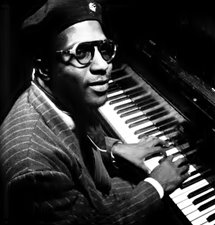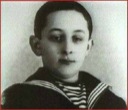 |
Welcome to the Piano World Piano Forums
Over 3 million posts about pianos, digital pianos, and all types of keyboard instruments.
Over 100,000 members from around the world.
Join the World's Largest Community of Piano Lovers
(it's free)
It's Fun to Play the Piano ... Please Pass It On!
|
|
|
|
60 members (brdwyguy, Carey, beeboss, Chris B, Cheeeeee, Dalem01, CharlesXX, 11 invisible),
1,892
guests, and
291
robots. |
|
Key:
Admin,
Global Mod,
Mod
|
|
|
|
Joined: Dec 2004
Posts: 101
Full Member
|

Full Member
Joined: Dec 2004
Posts: 101 |
First Hanon. Then I pick my nostrils with fingers 1-5 of each hand.
"Amateurs practice until they get a piece right. Professionals practice until they can't get it wrong."
|
|
|
|
|
Joined: Mar 2010
Posts: 3,340
3000 Post Club Member
|

3000 Post Club Member
Joined: Mar 2010
Posts: 3,340 |
Chopin op.10/25 and Bach WTK 1/2
Longtemps, je me suis couché de bonne heure, but not anymore!
|
|
|
|
|
Joined: Mar 2011
Posts: 807
500 Post Club Member
|

500 Post Club Member
Joined: Mar 2011
Posts: 807 |
First Hanon. Then I pick my nostrils with fingers 1-5 of each hand.  I hope I never play a piano after you.....
I don't care too much for money. For money can't buy me love.
-the Beatles
|
|
|
|
|
Joined: Sep 2008
Posts: 8,453
8000 Post Club Member
|

8000 Post Club Member
Joined: Sep 2008
Posts: 8,453 |
First Hanon. Then I pick my nostrils with fingers 1-5 of each hand.  I do hope you wash your hands before playing.
Close only counts in horseshoes, hand grenades, and nuclear weapons.
|
|
|
|
|
Joined: Sep 2008
Posts: 101
Full Member
|

Full Member
Joined: Sep 2008
Posts: 101 |
I hate warming up, but I do it anyway, because I spend many days without practicing at all, so I have to do it pretty much.
I usually do a few major/harmonic or melodic minor scales, going in opposite directions. If that seems too boring I might do sixths.
Then I do this 11-chord arpeggio thing...it's hard to explain, but basically it includes doing arpeggios of inversions of triads, including seventh chords. I find it to be helpful.
Then I play some Bach, and then after that I start playing the music I really like to (Ravel....maybe Liszt).
|
|
|
|
|
Joined: Mar 2011
Posts: 414
Full Member
|

Full Member
Joined: Mar 2011
Posts: 414 |
Then I do this 11-chord arpeggio thing...it's hard to explain, but basically it includes doing arpeggios of inversions of triads, including seventh chords. I find it to be helpful.
I heard Daniil Trifonov mention in an interview that they recommended this at the Gnessins School, and then he demonstrated it, but I couldn't follow quite what he was doing. Could you possibly describe the chord sequence for us?
|
|
|
|
|
Joined: Feb 2012
Posts: 12
Junior Member
|

Junior Member
Joined: Feb 2012
Posts: 12 |
Not sure what he's talking about "11 chord thing", but it doesn't really matter. There's no magical or corner-cutting soulution to having a good, solid piano technique.
To play the types of piano works that one hears from professionals, it takes a certain amount of time and effort to attain the degree of technique to play them. Period.
Playing occasionally and warming up with this or that, will not cut it.
To develop and maintain the muscle tone, coordination and flexibility to play at a professional level, I don't think this can be done on less than three hours a day, six days per week, with one hour devoted to building a durable technique.
Scales, trills, arpeggios, tremolos, double thirds, etc., practiced musically and easily without strain, will eventually build the technique. When you can play them with fluency and ease for a sustained amount of time without strain or tiring, say half an hour at about 130, then you have gone a long way toward building a professional technique.
You do not have to practice for speed. Once the technique is in place (and it all doesn't happen at once) you will find there is no problem "playing fast".
And once the technique is well on its way, you can shift away a bit from the scales and such, and put more attention to the repetoire.
The simple truth is, like any other "athletic pursuit" -- and make no mistake, pianists are highly skilled "small muscle athletes", it takes time, patience, consistency and care.
There are NO short cuts nor are there magical solutions.
Other than practicing scales, arpeggios, etc. I think Hannon is fine since it exposes both hands to the same efforts, and it employs a myriad of patterns and covers a lot of what one encounters in repetoire.
|
|
|
|
|
Joined: Dec 2009
Posts: 6,651
6000 Post Club Member
|

6000 Post Club Member
Joined: Dec 2009
Posts: 6,651 |
Not sure what he's talking about "11 chord thing", but it doesn't really matter. There's no magical or corner-cutting soulution to having a good, solid piano technique.
To play the types of piano works that one hears from professionals, it takes a certain amount of time and effort to attain the degree of technique to play them. Period.
Playing occasionally and warming up with this or that, will not cut it.
To develop and maintain the muscle tone, coordination and flexibility to play at a professional level, I don't think this can be done on less than three hours a day, six days per week, with one hour devoted to building a durable technique.
Scales, trills, arpeggios, tremolos, double thirds, etc., practiced musically and easily without strain, will eventually build the technique. When you can play them with fluency and ease for a sustained amount of time without strain or tiring, say half an hour at about 130, then you have gone a long way toward building a professional technique.
You do not have to practice for speed. Once the technique is in place (and it all doesn't happen at once) you will find there is no problem "playing fast".
And once the technique is well on its way, you can shift away a bit from the scales and such, and put more attention to the repetoire.
The simple truth is, like any other "athletic pursuit" -- and make no mistake, pianists are highly skilled "small muscle athletes", it takes time, patience, consistency and care.
There are NO short cuts nor are there magical solutions.
Other than practicing scales, arpeggios, etc. I think Hannon is fine since it exposes both hands to the same efforts, and it employs a myriad of patterns and covers a lot of what one encounters in repetoire. I won't agree on the three hours a day, six days a week bit, because it varies from person to person, but I certainly agree with everything else. I've said it many times here...there are NO shortcuts. Technique is part of that homework I'm always ranting about.
"And if we look at the works of J.S. Bach — a benevolent god to which all musicians should offer a prayer to defend themselves against mediocrity... -Debussy
"It's ok if you disagree with me. I can't force you to be right."
♪ ≠$
|
|
|
|
|
Joined: Mar 2011
Posts: 414
Full Member
|

Full Member
Joined: Mar 2011
Posts: 414 |
ps1, I think that all of us aiming for a career in performance realize the time and effort required to build and sustain a profession mechanism. My interest in the eleven chord sequence is simply for warmup purposes.
To build technique, I work on (always varying articulation, dynamics, speed, and rhythmic groupings):
Scales - a few keys per day: regular octave apart, two octaves apart, thirds, sixths, double thirds, and hopefully soon double sixths
Arpeggios - a few keys per day: inversions, in major 7ths, minor 7ths, half-diminished 7ths, and diminished sevenths
Octaves
Other "combined" exercises - Lhevinne's expansion and contraction exercise: five notes ascending chromatically played with 1-2-3-4-5, thumb/pinky crossover to an arpeggio played with 1-2-3-4-5 spanning a 10th, and then a crossover to 1, starting the chromatic half of the exercise - repeated over four octaves and in all keys. The stretching exercises of Rachmaninoff, Horowitz, and Adele Marcus.
Brahms 51 Exercises - just a few for now, but planning to do all 51 over the course of a year. Already doing some of the interesting ones: 5-1 1-5 crossover, ascending and descending broken octaves (#8, I think) and #29 in octaves alternating with single notes (actually just a rehash of one of the Paganini Variations).
Dohnanyi Finger Exercises - starting with the "easier" set that Dohnanyi gives: 1, 2, 12, and the scale exercises with smooth transitions between keys.
To build musicality and technique at the same time even more effectively and efficiently than simply playing finger exercises musically (which of course we always should do), I think Chopin etudes and Bach fugues are ideal. The passagework in the sonatas and concerts of Mozart and Haydn also are an excellent way to make sure your fingerwork is clear and even, both rhythmically and dynamically.
|
|
|
|
|
Joined: Sep 2008
Posts: 101
Full Member
|

Full Member
Joined: Sep 2008
Posts: 101 |
Hi,
I wasn't saying the 11-chord arpeggio warm-up is some magical thing that makes you awesome just by way of using it. Anyone who has heard me play knows how comparatively crappy my sound and technique is, I just use it as a way to warm up my fingers so I can move on to better things in my practice session. (Also, I am not aiming for a career in performance.)
Anyway, the 11-chord arpeggio would go like this:
If you start on the note, C, you would play through four octaves:
C Major, then c minor, then Ab major first inversion (6/3 chord), then a minor first inversion, then F major 2nd inversion (6/4 chord), then f minor second inversion.....
Then, through five octaves, you would play the following seventh chords:
C dominant seventh (root position), Ab dominant seventh (first inversion), F dominant seventh (second inversion), D dominant seventh (third inversion), c fully diminished seventh.
The same thing would happen if you started on D - you would use the major, the parallel minor, the 1st inversion chords, major and minor, whose bottom note is D (in this case Bb major and b minor), the second inversion chords whose bottom note is D, etc.
I've only done this starting on white keys though; maybe some people do it starting on blacks, but I've never done it/ seen it done that way.
|
|
|
|
Forums43
Topics223,392
Posts3,349,302
Members111,634
| |
Most Online15,252
Mar 21st, 2010
|
|
|
|
|
|
|





